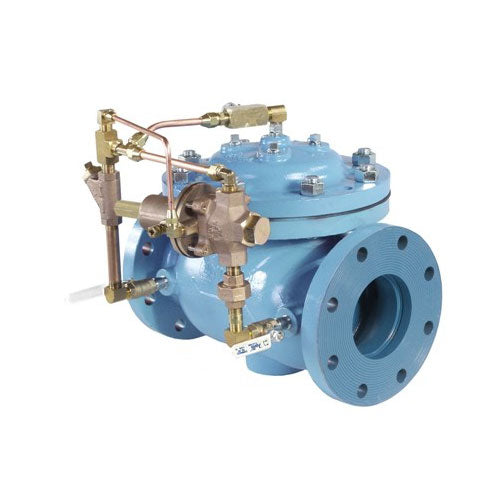Ingenious Control Valves: Enhancing Precision and Reliability
Ingenious Control Valves: Enhancing Precision and Reliability
Blog Article

Maximize Energy Cost Savings and Comfort With Advanced Building Automation Controls
In the realm of modern-day design and center administration, the combination of innovative building automation manages stands as a pivotal development. By using the power of automation, structures can adapt, react, and progress in means that were once unbelievable.
Power Performance Advantages
Energy effectiveness advantages can dramatically reduce energy consumption and operational expenses in buildings. By applying energy-efficient techniques and technologies, structure owners and operators can accomplish substantial cost savings while additionally adding to environmental sustainability. One of the primary benefits of boosting energy performance in structures is the reduction of utility costs. Energy-efficient systems, such as advanced building automation controls, can enhance making use of resources like home heating, lights, and cooling, causing lower energy expenditures gradually.
Additionally, improved power effectiveness can extend the life expectancy of building devices and systems. By running much more efficiently, heating and cooling systems, lighting fixture, and various other building parts experience less damage, leading to decreased maintenance and substitute prices. Furthermore, energy-efficient buildings frequently regulate higher residential or commercial property worths and rental prices, giving long-lasting economic advantages to owners.
Moreover, power performance can boost resident comfort and productivity. Properly managed interior settings with optimum lights and thermal problems develop an even more conducive and positive work space, causing boosted staff member complete satisfaction and performance. Generally, the power efficiency benefits connected with innovative building automation controls are diverse, including price savings, ecological stewardship, and passenger well-being.
Improved Comfort Control
Enhancing convenience control in building atmospheres needs an innovative assimilation of innovative automation systems for optimal resident well-being. By using sophisticated building automation controls, centers can customize the interior setting to fulfill the specific needs and preferences of residents. These systems allow exact law of lights, ventilation, and temperature level, developing a comfortable and productive environment. Occupant contentment and productivity are carefully connected to thermal convenience, making it necessary to have systems in position that can adjust to changing conditions in real-time.
Improved comfort control surpasses standard temperature adjustments. It includes attributes such as tailored settings, occupancy sensors, and all-natural light application to develop a vibrant and receptive atmosphere. By incorporating these sophisticated controls, buildings can not only boost comfort yet likewise boost energy performance by enhancing system procedures based on real occupancy and use patterns. Ultimately, focusing on occupant convenience with advanced automation systems leads to a much more satisfying and healthier interior environment.
Operational Effectiveness Improvements

Additionally, the implementation of real-time surveillance and analytics devices allows building operators to determine energy ineffectiveness and operational anomalies without delay. By continually checking energy usage patterns and system efficiency metrics, adjustments can be made in real-time to enhance power usage and make sure peak operational effectiveness. control valves. Additionally, including demand response methods right into structure automation controls can better enhance operational efficiency by dynamically changing energy usage based on grid find conditions and prices signals
Indoor Environment Optimization
Reliable interior environment optimization is a fundamental element of structure automation controls, guaranteeing owners' comfort and wellness while making best use of energy savings. By using innovative sensors and controls, constructing automation systems can continuously adjust and keep an eye on temperature, humidity degrees, air top quality, and ventilation to produce an optimal interior atmosphere. Maintaining regular and comfortable problems not only improves passenger contentment however likewise increases productivity and overall health.
Interior environment optimization likewise plays a critical function in energy efficiency. By fine-tuning cooling, heating, and air flow systems based on real-time data and occupancy patterns, building automation controls can substantially lower power usage - control valves. As an example, implementing strategies such as demand-controlled air flow and thermal zoning can help decrease energy waste while ensuring that each location of the structure gets the necessary conditioning.

Sustainable Setting Production
Structure automation manages not only enhance interior climate conditions for power performance and passenger convenience but likewise lay the foundation for developing a sustainable setting through critical management of resources and systems. By incorporating innovative building automation innovations, such as sensing units, actuators, and intelligent software, site facilities can keep track of and change power use in real-time to lessen waste and minimize their carbon footprint. These systems allow anticipating upkeep, recognizing possible issues before they intensify and maximizing equipment efficiency to enhance long life and efficiency.
Moreover, lasting environment development expands beyond energy monitoring to incorporate water conservation, waste decrease, and indoor air top quality improvement. Structure automation controls can regulate water usage, detect leakages, and ensure appropriate garbage disposal methods, adding to overall sustainability initiatives. Additionally, by checking and managing ventilation and purification systems, these modern technologies improve owner wellness and efficiency while lowering power intake linked with his explanation heating and cooling procedures.
Verdict
To conclude, advanced structure automation regulates deal significant benefits in terms of energy financial savings, convenience control, operational efficiency, indoor climate optimization, and developing a sustainable setting. By executing these controls, structures can achieve optimum performance while lowering energy intake and enhancing passenger convenience. It appears that the usage of sophisticated automation technology is important in boosting building performance and producing an extra sustainable future.
Power efficiency advantages can substantially decrease power consumption and operational costs in structures. In general, the power effectiveness advantages linked with sophisticated structure automation controls are diverse, encompassing price savings, ecological stewardship, and owner health.
In addition, integrating demand feedback approaches right into building automation controls can further boost functional efficiency by dynamically readjusting energy usage based on grid problems and prices signals.
Building automation controls not just enhance indoor environment problems for power effectiveness and resident comfort but likewise lay the foundation for creating a lasting setting with tactical monitoring of systems and resources.In verdict, advanced structure automation controls deal significant advantages in terms of energy savings, convenience control, operational efficiency, indoor climate optimization, and producing a sustainable environment.
Report this page